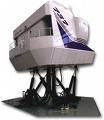 images.nintendolife.com
images.nintendolife.comPhilco Corporation engineers developed the first HMD in 1961, called the Headsight. The helmet included a video screen and tracking system, which the engineers linked to a closed circuit camera system. They intended the HMD for use in dangerous situations -- a user could observe a real environment remotely, adjusting the camera angle by turning his head. Bell Laboratories used a similar HMD for helicopter pilots. They linked HMDs to infrared cameras attached to the bottom of helicopters, which allowed pilots to have a clear field of view while flying in the dark.
In 1965, a computer scientist named Ivan Sutherland envisioned what he called the “Ultimate Display.” Using this display, a person could look into a virtual world that would appear as real as the physical world the user lived in. This vision guided almost all the developments within the field of virtual reality. Sutherland’s concept included:
A virtual world that appears real to any observer, seen through an HMD and augmented through three-dimensional sound and tactile stimuli
A computer that maintains the world model in real time
The ability for users to manipulate virtual objects in a realistic, intuitive way
In 1966, Sutherland built an HMD that was tethered to a computer system. The computer provided all the graphics for the display (up to this point, HMDs had only been linked to cameras). He used a suspension system to hold the HMD, as it was far too heavy for a user to support comfortably. The HMD could display images in stereo, giving the illusion of depth, and it could also track the user’s head movements so that the field of view would change appropriately as the user looked around.












